1. Introduction: What Is a Hikyaku?
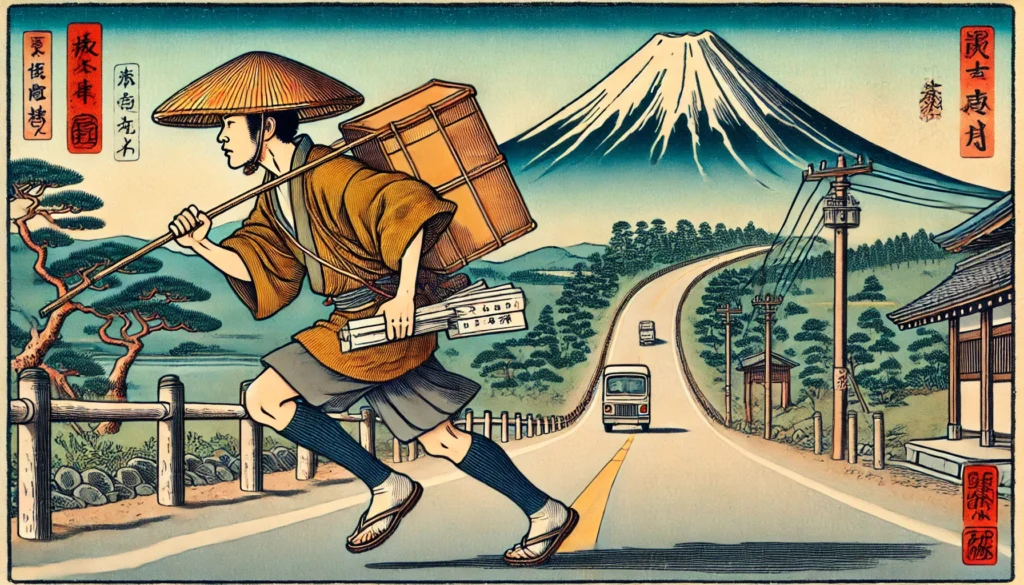
In today’s world, we take fast delivery services like Amazon and Uber Eats for granted. But did you know that Japan had an incredibly efficient delivery system way back in the Edo period (1603-1868)?
These couriers, known as Hikyaku (飛脚), were professional runners who transported letters and packages on foot. Some of them covered more than 100 km (62 miles) in a single day, a feat that sounds almost superhuman!
In this article, let’s explore the fascinating history of Japan’s high-speed delivery service, the Hikyaku, and some of their unbelievable achievements.
2. The History of Hikyaku
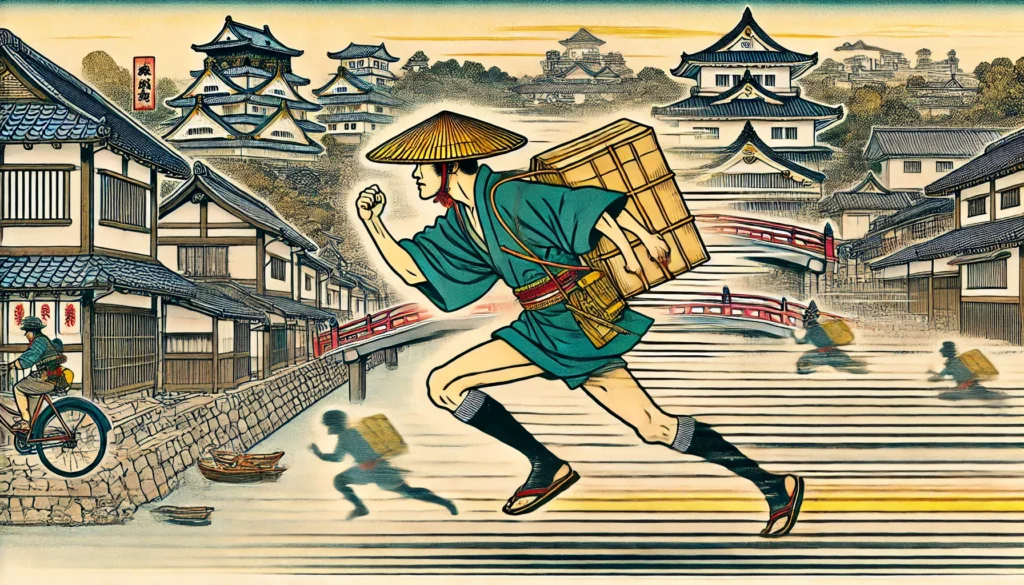
The origins of Hikyaku date back to ancient Japan. As early as the Nara (710-794) and Heian (794-1185) periods, couriers were used for official government communications. However, it was during the Edo period that a full-scale private delivery system developed.
With Japan’s roads and infrastructure improving under the Tokugawa Shogunate, courier services expanded significantly, allowing for rapid communication and trade across the country.
3. Types and Roles of Hikyaku
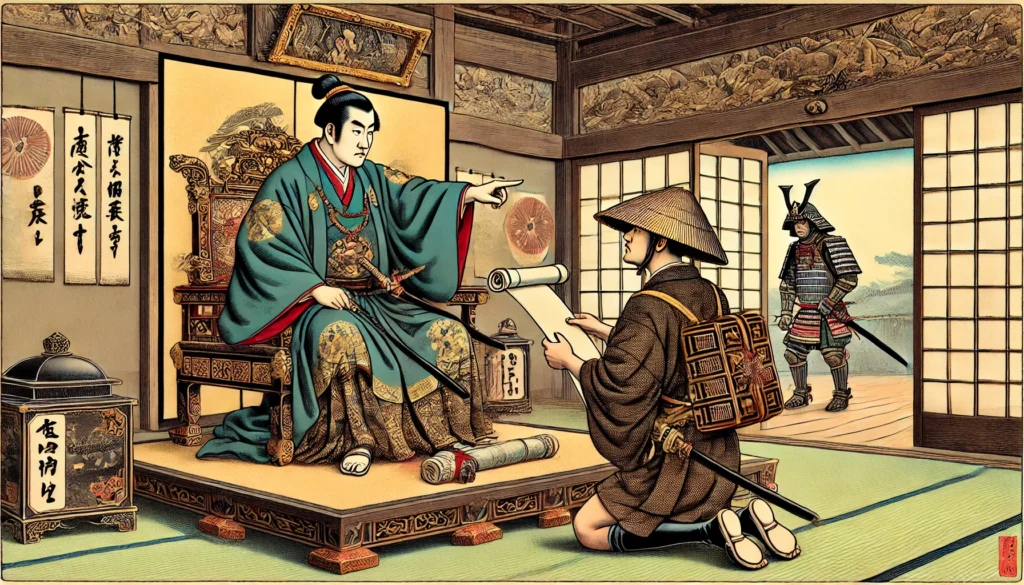
There were several types of Hikyaku, each with different roles:
• Daimyo Hikyaku – Employed by feudal lords (daimyo) to send messages between their domain and Edo (modern Tokyo).
• Machi Hikyaku – A commercial delivery service for townspeople, handling letters, business documents, and parcels.
• Bakufu Hikyaku – Official couriers for the shogunate, responsible for delivering government documents and secret messages.
• Urgent Hikyaku (Hayabikyaku) – Elite runners tasked with delivering high-priority messages at maximum speed.
The Hayabikyaku were the fastest and most skilled couriers, sometimes running more than 200 km (124 miles) per day—an incredible feat even by modern athletic standards.
4. The Superhuman Speed & Endurance of Hikyaku
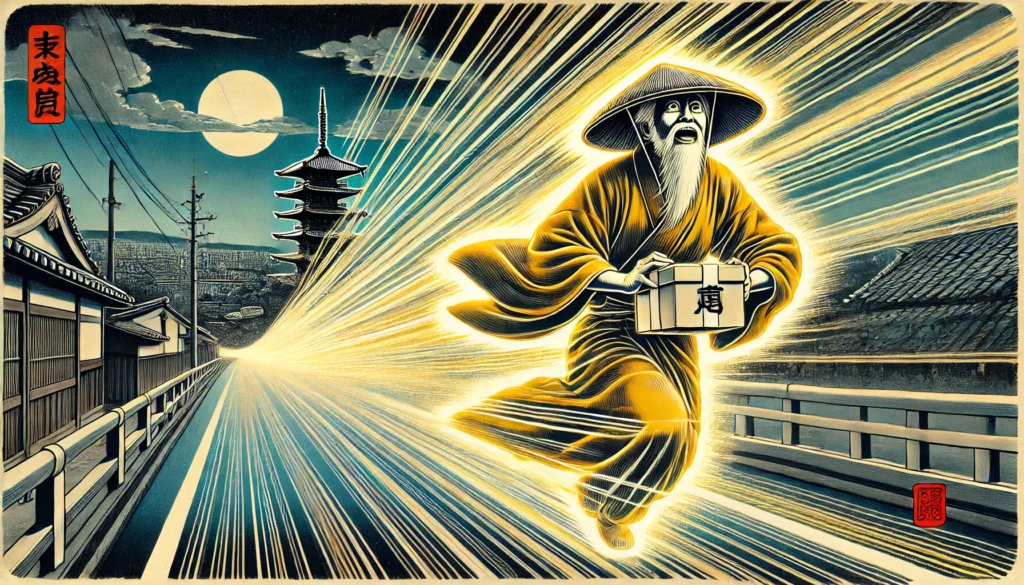
Hikyaku were not just messengers; they were endurance athletes trained to cover long distances at incredible speeds.
• 100 km (62 miles) per day was normal
Some records mention that Hikyaku completed the Edo–Osaka route (over 500 km / 310 miles) in just three days. A normal traveler at that time would take around 12 days to cover the same distance.
• A Record-Breaking 3-Day Run from Edo to Osaka
This legendary journey was achieved by relay-style Hikyaku, who passed messages at designated points. Even with this system, the speed was extraordinary.
• Unique Running Style
Hikyaku used a special running technique that resembled that of ninjas. By leaning forward and maintaining a rhythmic stride, they could reduce exhaustion and run efficiently over long distances.
• Energy-Boosting “Hikyaku Mochi”
To sustain their stamina, Hikyaku carried special rice cakes called “Hikyaku Mochi”, which provided quick energy. These can be considered an early version of modern energy bars.
5. Legendary Stories & Amazing Feats of Hikyaku
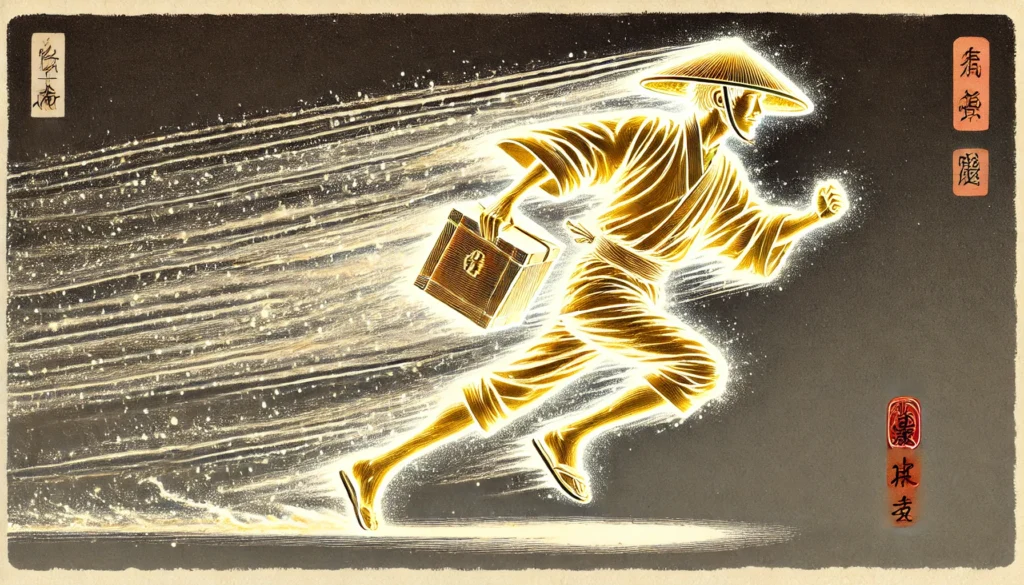
Hikyaku were famous for their incredible endurance and daring missions. Here are some jaw-dropping stories:
• Kyoto to Edo in a Single Day?!
There is a legend about an extreme Hikyaku who completed the Kyoto-to-Edo route (500 km / 310 miles) in just one day. While this was likely a relay run, it still demonstrates their unbelievable speed.
• A Life-or-Death Mission During the Sengoku Period
During Japan’s Warring States Period (1467-1615), some Hikyaku had to deliver military messages through enemy territories. One legendary Hikyaku reportedly swam across rivers, climbed mountains, and evaded samurai attacks to complete his mission.
• The Infamous “Hikyaku Crying Spots”
Certain parts of Japan’s old highways were so difficult that even the toughest Hikyaku struggled. Steep mountain passes, muddy roads, and dangerous river crossings were called “Hikyaku Crying Spots”, as they often pushed couriers to their limits.
6. The Fall of Hikyaku and the Rise of Modern Postal Services
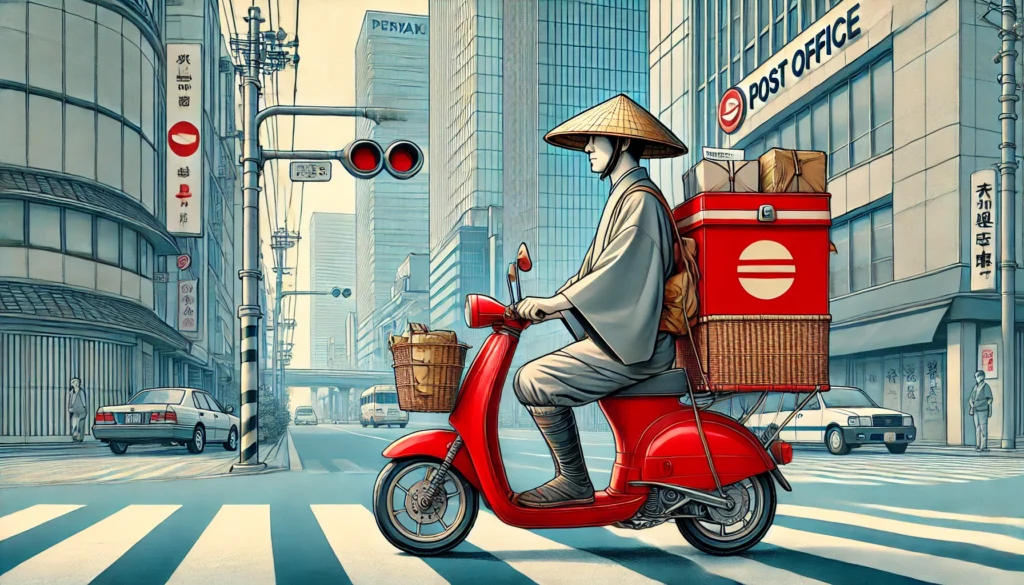
Hikyaku thrived throughout the Edo period, but their role began to decline during the Meiji period (1868-1912) when Western-style postal services were introduced.
In 1871, the Japanese government established a modern postal system, making Hikyaku services obsolete. However, their spirit and expertise in logistics lived on in Japan’s delivery industry.
One famous example is Sagawa Express (佐川急便), a major delivery company in Japan. Their logo features a running Hikyaku, honoring their legacy.
7. Conclusion: The Spirit of Hikyaku Lives On
Hikyaku were more than just couriers—they were superhuman athletes who played a vital role in Japan’s history. Their speed, endurance, and dedication made long-distance communication possible in an era before modern transportation.
Even today, Japan’s precision and efficiency in logistics can be traced back to the Hikyaku’s legacy. The next time you receive a fast delivery, take a moment to appreciate the incredible Hikyaku who set the foundation for modern express shipping!

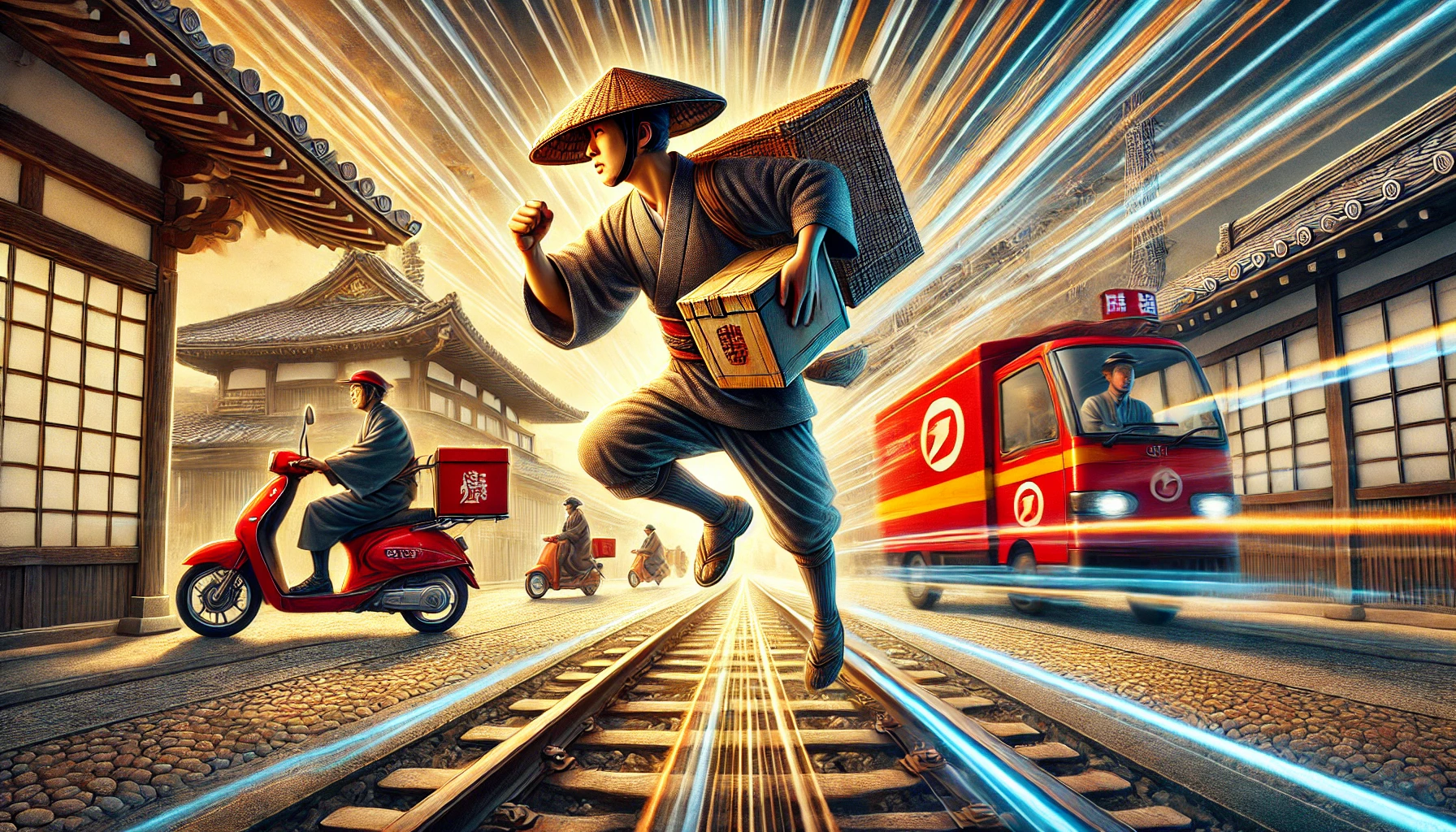


Comments